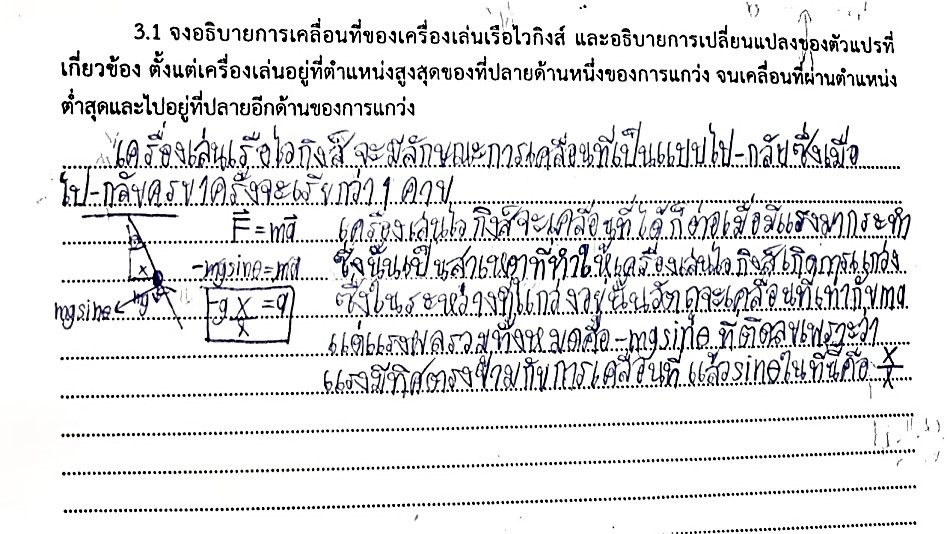ผลการใช้แนวคิดการเรียนรู้แบบ 3 มิติที่มีต่อความเข้าใจมโนทัศน์เชิงลึกทางฟิสิกส์ของนักเรียนมัธยมศึกษาตอนปลาย
Main Article Content
Abstract
Taweerak Thunphuttha, Sakolrat Kaewdee and Paisan Tooprakai
รับบทความ: 28 พฤษภาคม 2561; แก้ไขบทความ: 6 มิถุนายน 2561; ยอมรับตีพิมพ์: 3 กรกฎาคม 2561
บทคัดย่อ
การวิจัยนี้เป็นการวิจัยแบบกึ่งทดลองโดยศึกษานักเรียนสองกลุ่มและวัดผลหลังการทดลอง มีวัตถุประสงค์เพื่อ (1) วิเคราะห์ความเข้าใจมโนทัศน์เชิงลึกทางฟิสิกส์ของกลุ่มนักเรียนมัธยมศึกษาตอนปลายที่เรียนด้วยการใช้แนวคิดการเรียนรู้แบบ 3 มิติ และ (2) เปรียบเทียบความเข้าใจมโนทัศน์เชิงลึกทางฟิสิกส์ของนักเรียนที่เรียนด้วยการใช้แนวคิดการเรียนรู้แบบ 3 มิติ กับนักเรียนที่เรียนด้วยการจัดการเรียนรู้แบบทั่วไป ประชากรเป้าหมาย คือ นักเรียนระดับมัธยมศึกษาตอนปลายจากโรงเรียนขนาดใหญ่ในกรุงเทพมหานคร กลุ่มที่ศึกษา คือ นักเรียนชั้นมัธยมศึกษาปีที่ 4 จำนวน 83 คน ประกอบด้วยนักเรียนกลุ่มทดลองจำนวน 34 คน และนักเรียนกลุ่มเปรียบเทียบ จำนวน 49 คน การวิจัยดำเนินการเก็บข้อมูลในภาคเรียนที่ 1 ปีการศึกษา 2560 เป็นระยะเวลา 5 สัปดาห์ เครื่องมือที่ใช้ในการเก็บรวบรวมข้อมูล คือ แบบวัดความเข้าใจมโนทัศน์เชิงลึกทางฟิสิกส์ วิเคราะห์ข้อมูลด้วยค่าเฉลี่ยเลขคณิต ค่าเฉลี่ยร้อยละ ส่วนเบี่ยงเบนมาตรฐาน สถิติทดสอบทีของกลุ่มที่ศึกษากลุ่มเดียวเทียบกับเกณฑ์ (one sample t–test) และสถิติทดสอบทีระหว่างสองกลุ้ทที่ศึกษาที่เป็นอิสระต่อกัน (independent samples t–test) ผลการวิจัยพบว่า (1) นักเรียนกลุ่มทดลองมีคะแนนเฉลี่ยความเข้าใจมโนทัศน์เชิงลึกทางฟิสิกส์เฉลี่ยหลังเรียนต่ำกว่าเกณฑ์ระดับ 4 (= 36.39, SD = 13.34) (2) นักเรียนกลุ่มทดลองมีคะแนนเฉลี่ยความเข้าใจมโนทัศน์เชิงลึกทางฟิสิกส์น้อยกว่านักเรียนกลุ่มเปรียบเทียบอย่างมีนัยสำคัญทางสถิติ (t = –2.027, p = .046)
คำสำคัญ: แนวคิดการเรียนรู้แบบ 3 มิติ ความเข้าใจมโนทัศน์เชิงลึกทางฟิสิกส์ ระดับชั้นมัธยมศึกษาตอนปลาย
Abstract
This study was a quasi-experimental research and used two–group posttest only design. The purposes of this study were to (1) analyze deep conceptual understanding in physics of upper secondary students after learning by using three–dimensional learning and (2) compare the students’ deep conceptual understanding in physics between a group learning with the use of three–dimensional learning and another group which learning by conventional method. The target population was upper secondary students of large schools in Bangkok. The sample were 83 tenth–grade students consisting of the experimental group with 34 students and the compared group with 49 students. This research was conducted in the first semester of the academic year 2017 for a period of 5 weeks. The research instrument was deep conceptual understanding in physics test. The collected data was analyzed by means of arithmetic mean, mean of percentage, standard deviation, one sample t–test and independent samples t–test. The study revealed that: (1) the deep conceptual understanding in physics of the experimental group mean score was lower than criterion 4 (= 36.39, SD = 13.34), and (2) the deep conceptual understanding in physics of the experimental group had average score on significantly lower than the comparison group at the .05 level (t = –2.027, p = .046).
Keywords: Three–dimensional learning approach, Deep conceptual understanding in physics, Upper secondary level
Downloads
Article Details

This work is licensed under a Creative Commons Attribution-NonCommercial 4.0 International License.
References
Bybee, R. W. (2011). Scientific and engineering practices in K–12 classrooms. Science Teacher 78(9): 34–40.
Campbell, T. (2015). The importance of epistemic framing and practices in the next generation science standards: Explaining phenomena, solving problems, and modeling as an anchoring science practice. Proceedings of the Korean Association for Science Education (KASE). Busan, South Korea.
Chase, C. C., Shemwell, J. T., and Schwartz, D. L. (2010). Explaining across contrasting cases for deep understanding in science: An example using interactive simulations. Proceedings of the 9th International Conference of the Learning Sciences-Volume 1.
Gobert, J. D., and Buckley, B. C. (2000). Introduction to model–based teaching and learning in science education. International Journal of Science Education 22(9): 891–894.
IPST. (2010). Teacher’s Guide; Physics Volume 1 for Grade 10–12 students. Bangkok: Author. (in Thai)
IPST. (2016). TIMSS 2015 Report. Retrieved from http://timssthailand.ipst.ac.th/timss/ reports, May 18, 2017 (in Thai).
Jewtt, J. W., and Serway, R. A. (2010). Physics for Scientists and Engineers with Modern Physics. 8th ed. Canada: Brooks/ Cole.
Krajcik, J. (2015). Three–dimensional instruction. The Science Teacher 82(8): 50.
Meltzer, D. (2002). Student learning of physics concepts: efficacy of verbal and written forms of expression in comparison to other representational modes. In Conference on Ontological, Epistemological, Linguistic and Pedagogical Considerations of Language and Science Literacy: Empowering Research and Informing Instruction. Victoria, British Columbia, Canada
OECD. (2013). PISA 2015 Draft Science Framework. Retrieved from https://www.oecd.org/pisa/pisaproducts/Draft%20PISA%202015%20Science%20Framework%20.pdf, April 17, 2016.
Pratontep, S. (2012). How to Be Good at Physics. Retrieved from http://physics. ipst.ac.th/?p=2228, March 6, 2016. (in Thai)
Shen, J., and Linn, M. C. (2011). A Techno-ogy–enhanced unit of modeling static electricity: Integrating scientific explanations and everyday observations. Inter-national Journal of Science Education 33(12): 1597–1623.
Shen, J., Liu, O. L., and Chang, H.–Y. (2017). Assessing students’ deep conceptual understanding in physical sciences: An example on sinking and floating. International Journal of Science and Mathematics Education 15(1): 57–70.
Shwartz, Y., Rogat, A., Merritt, J., and Krajcik, J. (2007). The effect of classroom practice on students understanding of models. The Annual Meeting of the National Association of Research in Science Teaching. New Orleans, LA.
